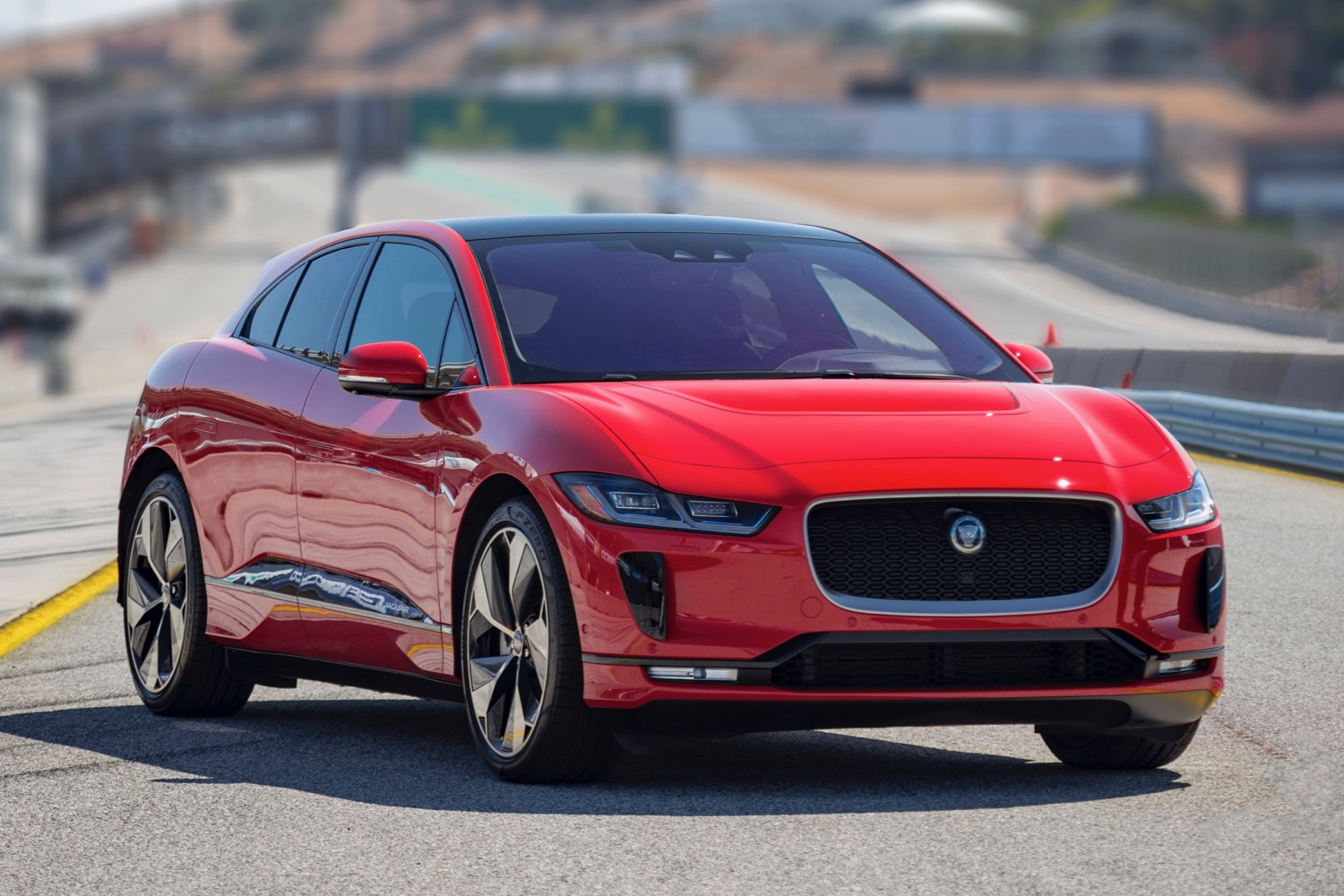
Jaguar is launching a software update to improve the performance of its I-Pace electric car. The update was designed using lessons learned from racing I-Paces in a dedicated series, according to Jaguar. The automaker also claims this update will improve range — but official EPA figures are unchanged.
Engineers used the Jaguar I-Pace eTrophy race series as a source of data, learning how vehicle components held up under extreme use. The eTrophy series uses a fleet of identical I-Paces, which race on Formula E tracks. The cars are modified for racing, but use the stock battery pack and powertrain. Engineers also analyzed data from 50 million miles of driving by I-Pace owners on regular roads, according to Jaguar.
Data from the eTrophy race series allowed engineers to eke out “marginal gains” in efficiency for the I-Pace’s 90-kilowatt-hour battery pack, according to Jaguar. While the official EPA range rating of 234 miles doesn’t change, Jaguar claims owners can expect a gain of up to eight percent in certain conditions.
The potential for greater range is likely related to specific tweaks made to the powertrain and battery control software. Based on lessons learned from racing, engineers managed to make the I-Pace more efficient in Eco mode, and made changes that allow the battery pack to run at a lower state of charge, according to Jaguar. Data from racing also led engineers to change the way the all-wheel drive system distributes torque between the front and rear electric motors, and the operation of active radiator shutters, according to Jaguar. The shutters now stay closed longer, improving aerodynamic efficiency.
Engineers also made some changes based on data from real-world driving, according to Jaguar. The regenerative braking system now recovers more energy at low speeds, and works more efficiently when the battery is in a high state of charge, Jaguar claims. Regenerative braking, which turns energy normally lost as heat into electricity, typically loses effectiveness when the battery is near full because the electricity has nowhere to go.
Jaguar also changed the I-Pace’s range calculator. A new algorithm will deliver more accurate range estimates, and will account for individual driving styles, the automaker claims.
Jaguar calls the software update over-the-air (OTA), but owners will still have to take their cars to dealerships to have it installed, free of charge. That’s a bit less convenient than Tesla, which installs updates while cars are parked in owners’ driveways. Once the update is installed, Jaguar claims other aspects of the I-Pace will be able to receive OTA updates. Other automakers, including Ford and General Motors, have promised similar capability for upcoming vehicles.
Editors' Recommendations
- Business upfront, 31-inch TV in the back. BMW’s electric i7 is a screening room on wheels
- Google deploys a Jaguar I-Pace as its first all-electric Street View car
- BMW’s electric i4 will make its debut in 2021 with 530 hp, 300 miles of range
- Can big rebates lure Tesla owners into Jaguar’s segment-bending I-Pace?
- I used to be a die-hard petrol-head, but Jaguar’s electric SUV converted me


